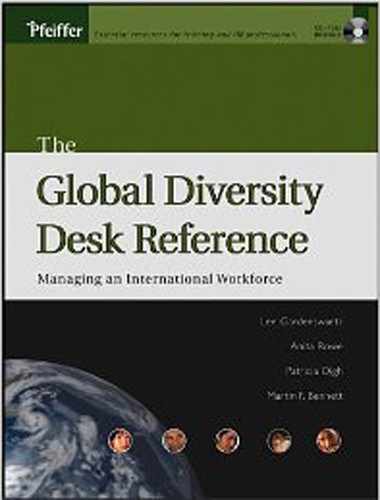Chapter 5. Managing Conflict in an International Environment
In The Nature of Prejudice, Gordon W. Allport stated, "Conflict is like a note on an organ. It sets all prejudices that are attuned to it into simultaneous vibration. The listener can scarcely distinguish the pure note from the surrounding jangle."[] Understanding conflict in an international business environment requires that we simultaneously understand the "pure note" and not contribute to the surrounding "jangle" of which Allport spoke.
All conflicts are ultimately intercultural. As business becomes more global, intercultural contact in the workplace has increased and has been associated with conflict, negative intergroup competition, and absenteeism.[] Conflict is costly in the workplace, resulting in low morale, high employee turnover, and loss of productivity. But the costs can be much greater, too.
Failure to understand the cultural logic of the "other" can also be deadly. For example, during the Egyptian-Israeli conflict during the 1960s, Israeli officials believed they could deter aggressive behavior by making it very costly, responding to acts of Egyptian violence with disproportionate force. The Egyptians believed the Israeli attacks were unconscionable efforts to attack their honor, which had to be met. Incorrect interpretations of each other's behavior led to tragic consequences for both.[]
Just as conflict is ultimately intercultural, so too are responses to it: Americans view conflict as natural and typically take an aggressive "winner-take-all" attitude toward it. Mexicans know conflict is inevitable, but deal with it indirectly and try to avoid it as much as possible. The Japanese value Wa (harmony) and avoid open conflict, as do Scandinavians. For Germans, conflict is viewed as dysfunctional. For Navajo Indians, if a dispute ends by having a winner and a loser, one conflict has ended, but another is sure to begin. In South Korea, the concept of hwa jengor or "escaping extremes," espoused by seventh century monk Won Yo, marks their approach to conflict.
Knowing how culture influences conflict is vital not only in preventing or resolving it, but also in ensuring that conflict plays a positive role in the organization rather than a detrimental or costly one. The key is to develop management practices that will prevent or minimize the impact of cross-cultural clashes, as well as unleash the creative potential inherent in such conflicts. The challenge for management is how best to exploit the opportunities arising from a mix of cultures—such as enhanced group performance, organizational learning, and quality decision making—while minimizing the negative consequences—such as lower group productivity and organizational performance.[]
Samuel Huntington, in The Clash of Civilizations and the Remaking of the World Order, writes that "the fundamental source of conflict in this new world will not be primarily ideological or primarily economic [but] cultural." While Huntington's assessment of the deep-rooted nature and importance of culture as a source of conflict is correct, Professor Michelle LeBaron suggests a more positive approach:
Culture also operates as a positive organizing force that lends coherence, meaning, and richness to life. It is a medium for relationship both within groups and among groups. Culture offers a system of symbols translated into behaviors that can operate as a bridge for outsiders, even if sometimes it may feel like a drawbridge. In reality, culture is neither a formidable fortress nor a dispensable platform; it is an integral part of human existence that has the potential to serve as an important resource in transforming intercultural conflict.[]
While Huntington sees culture as the major source of conflict in the years to come, LeBaron sees it as a resource to transform conflict.
Understanding the cultural values underlying conflict will not in itself prevent conflict from occurring, but might help us avoid its escalation and begin the process of resolution. This chapter discusses some of the ways that culture has an impact on conflict, sources and kinds of conflict that we face in the global workplace, cross-cultural approaches to conflict, and methods of resolution. Several tools are included to help the readers understand the dynamics of conflict and conflict resolution in cross-cultural contexts, as well as their own personal conflict "style."
